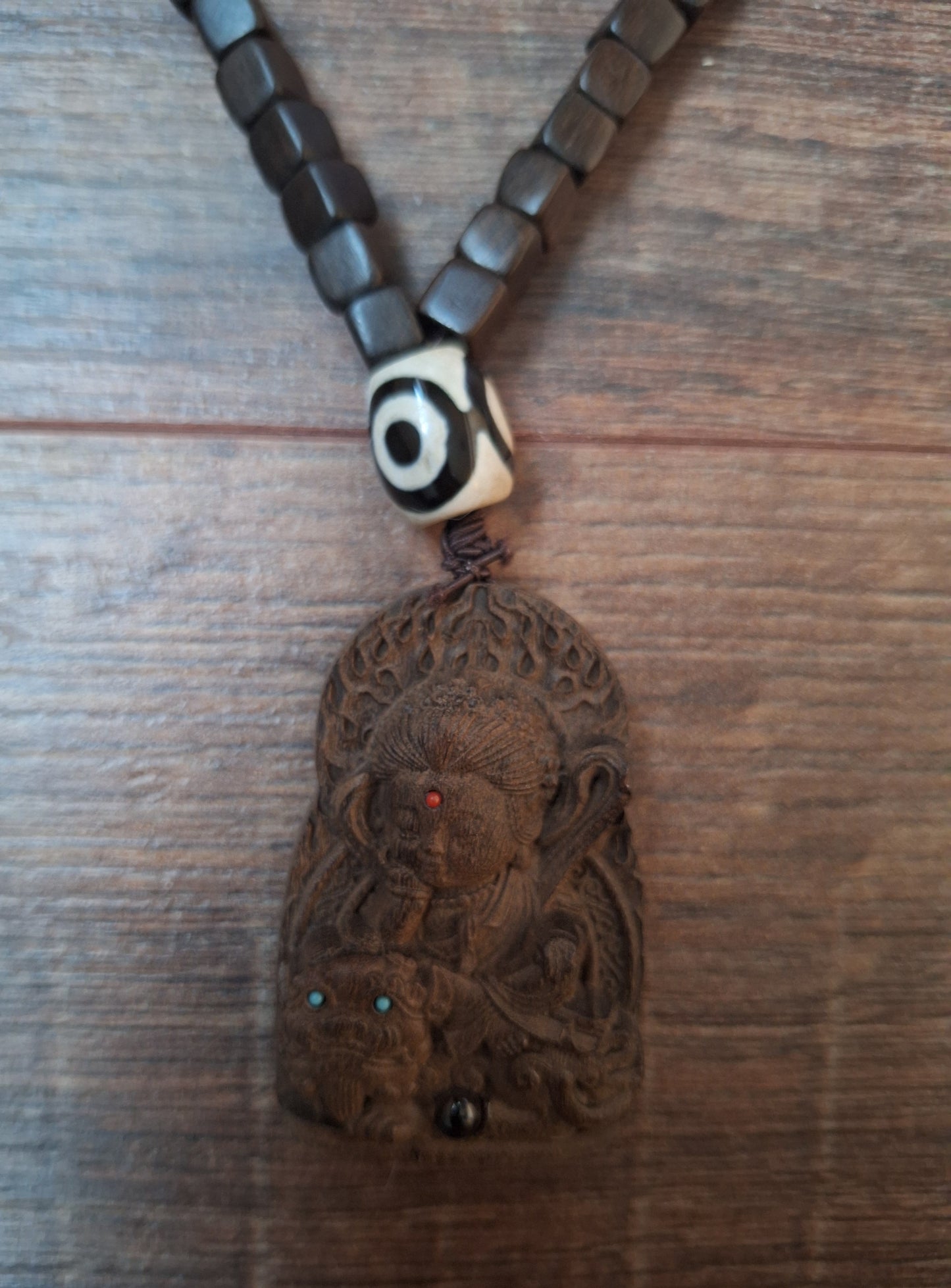Seawolf Shop
Wooden mala with Guanyin pendant
Wooden mala with Guanyin pendant
Couldn't load pickup availability
Share
Recently made wooden mala, with a nice woodcarved pendant depicting Guanyin on a Chinese lion (Foo Dog, temple-lion).
Guanyin is the Chinese version of the bodhisattva also known under the names of Avalokiteshvara or Chenrezig, one of the most well-known and most highly regarded figures in the Buddhist group of "Eight Boddhisattva's".
In the iconography of Avalokiteshvara or Chenrezig he is mostly depicted as a male being, and also older depictions of Guanyin show him as such, but somewhere between the 8th and 10th century the depiction slowly shifted into her nowadays almost exclusively female version.
A bodhisattva is the name for a buddhist deity who has reached the state of bodhicita, but consciously chooses not yet to take that final step towards becoming a fully enlightened buddha. Instead choosing to stay close to the eartly realms to assist others on their paths, driven to do so out of a great sense of compassion.
And this characteristic is exactly what Guanyin / Avalokiteshvara embodies; the ultimate, selfless and unconditional compassion of the Buddha. The name 'Guanyin' can be roughly translated as 'the one who perceives all the sounds of the world', refering to the fact that she is said to hear and listen to all the prayers and pleas of mankind, always ready to come to the assistance, bringing comfort and solace.
Next to the more general characteristics that are ascribed to all relatives in the Guanyin - Avalokiteshavara - Chenrezig family, there are also some more specific features associated with Guanyin. For example as a goddess of the sea or as 'Songzi', the 'child-giver'; an aspect in which she is prayed to for blessing families with healthy children and especially male heirs.
The very nicely detailed pendant on this mala shows Guanyin sitting on a lion, symbolizing her divine power to assist in overcoming all human sufferings The pendant is carved from a light brown wood and decorated with some small glass cabochons. Size of the pendant is 6 centimeters high and 3,8 centimeters wide
The 108 cubical wooden beads with a size of 7 millimeters have been strung on brown elastic cord, with a total length of 78 centimeters and a total weight of 63 grams. For a guru bead, a (recently made, stone) 3 eye dzi bead has been used. This bead measures approximately 15 x 13 millimeters.
On the symbolism of the 3 eye dzi bead:
The 3 eye dzi bead is associated with Kubera (also named Dzambala), the Tibetan god of wealth. Also the 3 eyes stand for the 3 main roads or aspects of a human life; health, career and personal life. Take those two associations together and it is clear what this dzi bead symbolizes; wealth on all main roads of life. The 3 eye dzi bead helps to gain, keep and increase not only material and financial wealth, but also a wealth of experience, knowledge and wisdom. It helps to keep a clear overview of where to focus on, where to wisely spend your money, time and energy on and where all this would be wasted and you’d better just stop and walk away.
According to legend, Kubera himself wasn’t born in incredible wealth, but instead in unimaginable poverty. He needed to gain a lot of experience, wisdom and skill along his way to becoming the keeper of all earthly treasures that he is today. Therefore, Kubera is said to especially appreciate those who adequately assess their capabilities, and try to earn not only money, but also a broad outlook and experience. Kubera rewards those who work hard for an overall rich and full life on all 3 main roads.
When you look at a 3 eye dzi bead closely, you could say that the 3 eyes resemble a mouth and two eyes. It is said that a 3 eye dzi bead loves to be taken to new places, where the energy of wealth is soaring in one way or another. The eyes and mouth of the bead will feast themselves on things like the richness of nature, the abundance of a good meal, the beauty of unique architecture or the treasures found in art musea. All these impressions will enrich the dynamics of the bead and eventually return this to the owner in the form of new potential.













